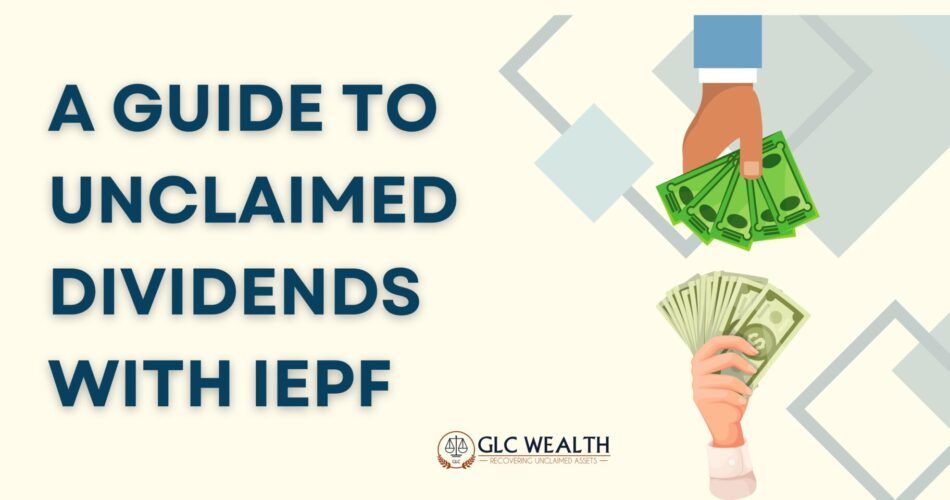
A Guide to Unclaimed Dividends with IEPF
What are Unclaimed Dividends?
A dividend that is being paid by the company but has not yet been claimed or accepted by the shareholder is known as an unclaimed dividend. Unclaimed dividends are a problem for the firm since they must be paid by the company when they are requested.
Difference between “unpaid dividends” and “unclaimed dividends?”
Even though unpaid and unclaimed dividends have independent definitions and ideas, people frequently combine the two. A dividend is considered unclaimed if a shareholder does not claim it. Unclaimed dividends, to put it simply, are dividends that the owner has not reported or claimed. Unpaid dividends are the outcome of a discrepancy between the declaration and payment dates.
How does an unclaimed dividend account get transferred to the IEPF?
A dividend is declared as an unclaimed dividends when a shareholder does not claim it. As per section 124(6) of the Act of 2013, the corporation must transfer the unclaimed dividends to the Investor Education and Protection Fund (IEPF) if the legitimate owner does not claim them within seven consecutive years. Nonetheless, a shareholder may contact the IEPF Authority at any moment to claim their shares or dividends. utilizing the form-5 IEPF.
Why are dividends left unclaimed?
There are a number of possible explanations for dividends that go unclaimed. In the Indian market, a few typical causes of unclaimed dividends are as follows:
- Change in address or investor moving abroad.
- Lost or damaged physical share certificates.
- Passing away investors without providing inheritors with any information.
- Not updating bank information linked to the Demat account.
Here is a step-by-step guide to assist you in obtaining your unclaimed money:
Step 1: Visit the IEPF website
Go to the website iepf.gov.in on the main page. Go to the “Services” menu and click the “Claim Refund” option. Click the “Upload eForms” link located on the left side of the “Claim Refund” tab.
Step 2: Register via the MCA Portal.
You will be taken to the MCA Portal, where you must log in. Following your login, you must select “MCA Services” and then “IEPF-5.”
Step 3: Fill out the online form
Complete the online refund claim form available on the IEPF website by entering all necessary information, such as name and PAN number, dividend details, company information, bank account, demat account, etc.
Step 4: Attach the Required Documents
Attach all necessary documentation, including your PAN card, Aadhar Card, Entitlement letter, cancelled cheque, demat account’s client master list, etc. as well as any additional supporting documents proving your right to the investment in the company like affidavits or indemnity bonds, etc.
Step 5: Submit the Form
Once the form is completed and the necessary documents are attached, it has to be submitted online to the IEPF Authority. An SRN acknowledgement will be provided upon submission, allowing you to monitor the progress of your claim.
Step 6: Provide the Nodal Officer with physical papers
The completed form must be printed out and delivered to the company’s nodal officer, together with all supporting documentation that has been properly signed.
Step 7: The Verification Report is filed by the company.
After the physical papers are received, the company’s Nodal Officer will check them, and an online E-Verification Report will be issued to the IEPF Authority with the approval.
Step 8: IEPF Authority Approval
The IEPF Authority will review the claim and, if needed, may ask for more supporting documentation. It might be necessary for you to follow up with the authorities for updates during the lengthy verification procedure. Your registered email address will receive an approval email from the IEPF Authority following the verification.
Step 9: Money Transfer and Refund Initiation
The IEPF Authority will initiate the refund process and credit your bank account with the funds if your claim is approved and validated. A transfer of the shares to your Demat Account will occur.
